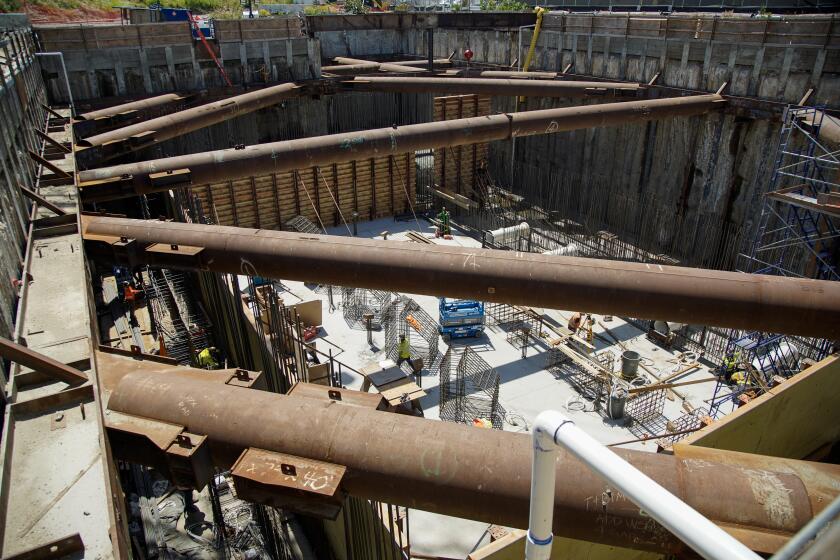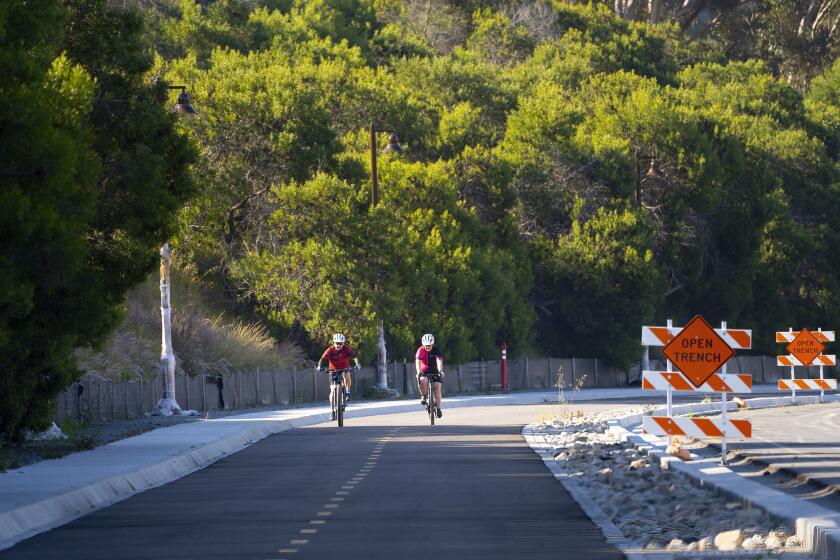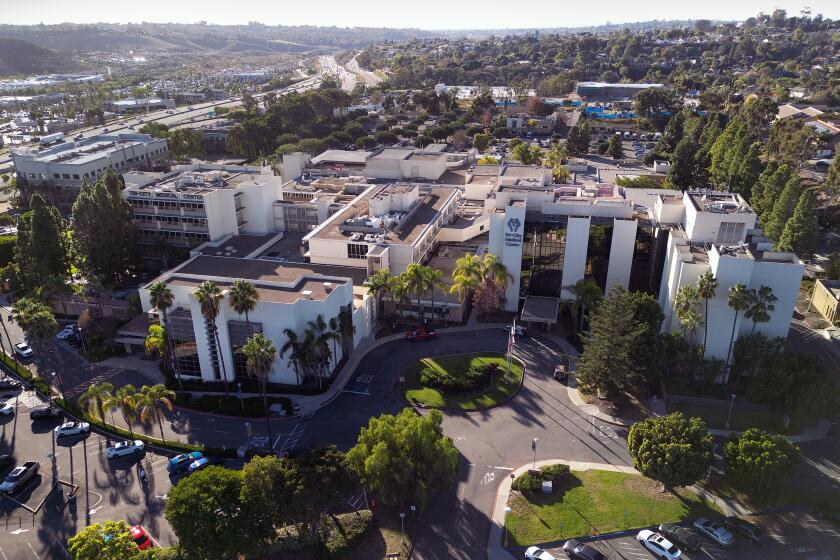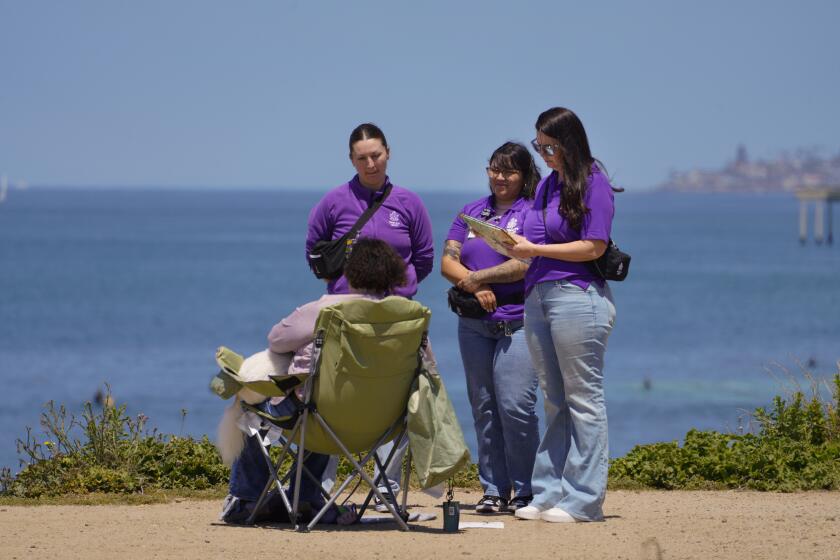Changes proposed for Mission Bay’s ‘bowling pin’ island
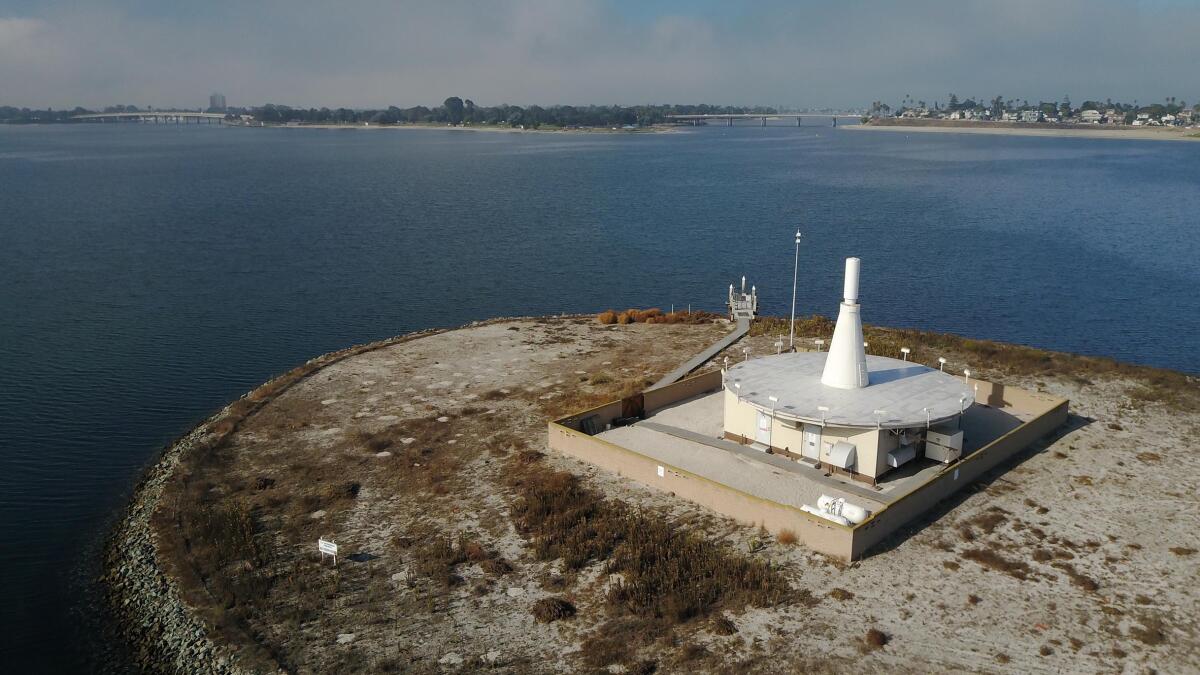
San Diego officials are considering some changes to “bowling pin” island in Mission Bay Park, a small piece of land that’s crucial to airplane navigation and bird nesting.
The Federal Aviation Administration, which has used a white structure on the island shaped like a bowling pin to help guide planes since at least 1961, wants to replace an aging dock that provides boat access to the island.
The proposed changes would also include installation of new bird spikes, a new bird structure and elimination of areas where bird predators can hide. The island is one of four key nesting sites for the endangered California least tern.
The FAA needs approval from the city, which leases the land to the federal agency, and from the U.S. Fish and Wildlife Service, an environmental agency with discretion over projects affecting sensitive plants and animals.
An official with the San Diego chapter of the Audubon Society said this week his organization is generally supportive of the project.
The Mission Bay Park Committee voted unanimously to support the renovations earlier this month.
A consultant hired by the FAA to complete the project told the committee that Fish and Wildlife officials support the proposed changes.
The consultant, Walter Crampton, said the work would be conducted in a way that minimizes disruption to the mostly pristine island in Fiesta Bay.
The dock, which dates back to 1961, won’t last much longer, he said.
“The dock is in serious disrepair,” he said. “The FAA is very interested in replacing it.”
Crampton said the concrete pylons that support the dock would remain in place and a new dock would be placed on top of them. Crews will bring the new dock into Mission Bay at the northeast corner near De Anza Cove, he said.
The new dock will be 8 feet wide, the same width as the existing dock, and 27.5 feet long, four feet longer than the existing dock.
Crampton said FAA officials use the dock when they visit the island roughly 10 times per month. The Audubon Society and Fish and Wildlife officials also visit about 10 times a month to monitor bird nesting and habitats.
The island is a key spot for least tern nesting, said Andrew Meyer, conservation director for the Audubon Society’s local chapter. The other three are North Fiesta Island, Stony Point and Mariners Point.
“The island is critical for the birds,” Meyer said. “They’re going to make a couple other improvements to the site that will help birds, like removing some spots where raptors can perch and pick off least terns when they are nesting.”
Crampton said the island, which is about 3 miles from San Diego International Airport, provides crucial navigation help to commercial aircraft, private planes and military planes.
It is one of eight such facilities in the county. The others are at Camp Pendleton, Oceanside, Julian, Miramar, La Jolla’s Mount Soledad, Imperial Beach and Coronado’s North Island.
The bowling pins are essentially radio direction finders for planes. Officials say they transmit tones that can help pilots maintain proper direction and detect when they have nosed off course.
The navigational aids are called VORTAC stations.
To protect least terns on the island and elsewhere in Mission Bay, the city cooperates with environmental agencies and the Audubon Society on a program that traps and kills skunks, possums and other animals that target the birds and their mating sites.
Top headlines by email, weekday mornings
Get top headlines from the Union-Tribune in your inbox weekday mornings, including top news, local, sports, business, entertainment and opinion.
You may occasionally receive promotional content from the San Diego Union-Tribune.




